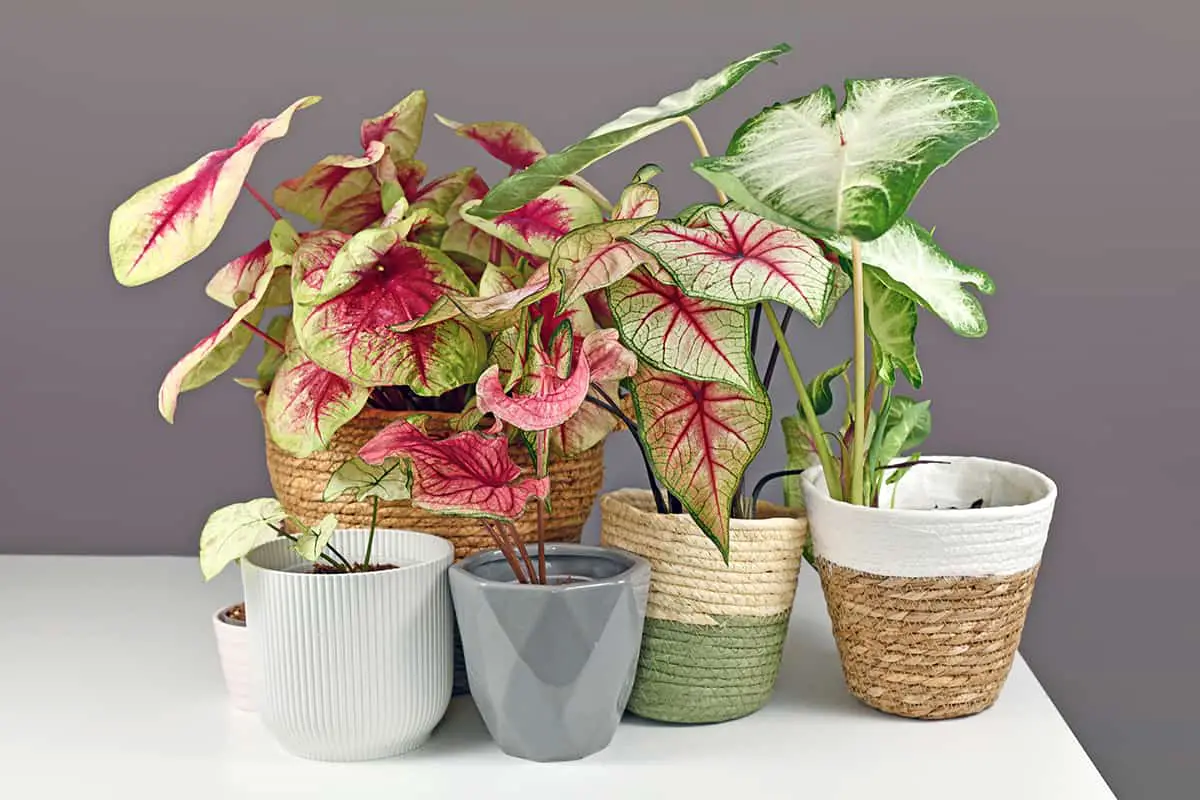When you moved into your first apartment with minimal natural light, you might have worried that your love for vibrant houseplants would have to be shelved. That was until you discovered caladiums. With their spectacularly colored leaves, ranging from deep reds to luminous greens, these plants thrived even in the low light of your living room, turning your new space into a lush retreat.
Keep reading for detailed care tips on this stunning plant.
Table of Contents
Light
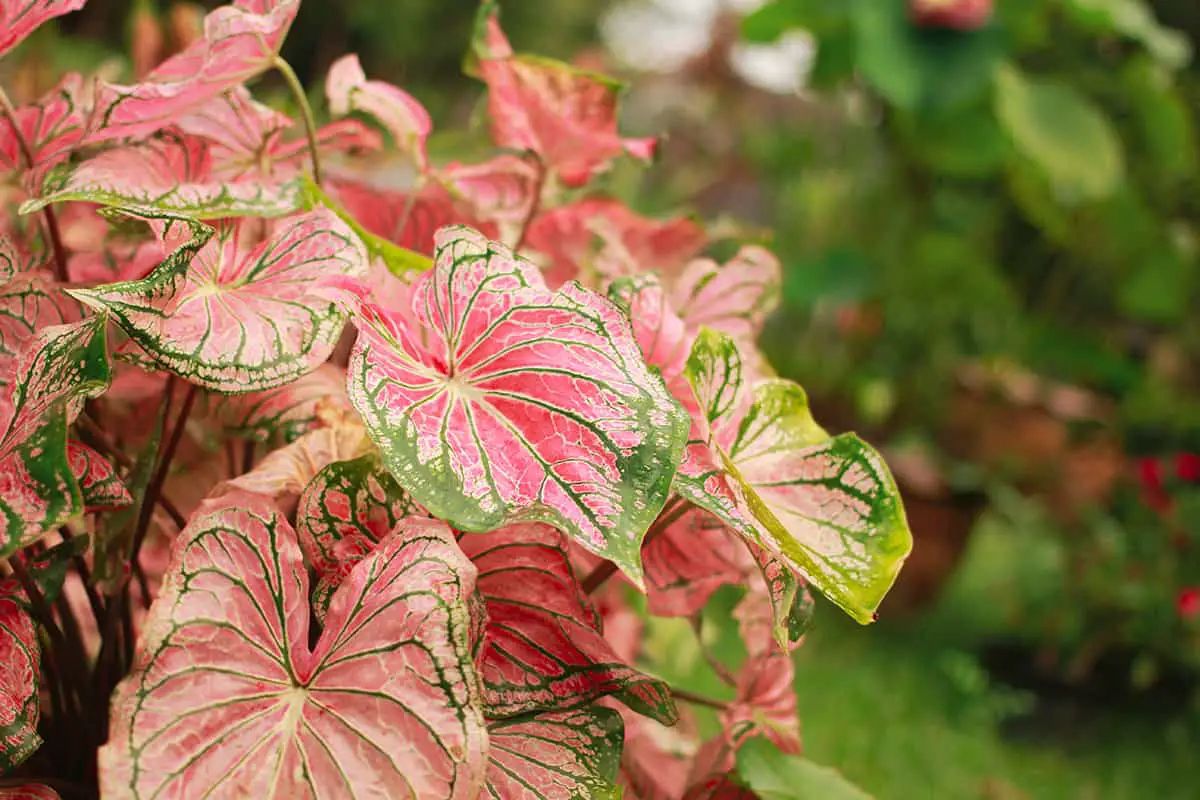
Caladium thrives in bright but indirect sunlight. Place your plants where they can receive filtered light. This ensures they get the light they need without the harshness of direct sun, which can fade their vibrant leaves.
When growing caladiums outdoors, choose a shaded area. Under trees or a canopy can be ideal. Their leaves should be protected from the full sun, especially during the peak hours of the day.
If you keep caladiums indoors, a north- or east-facing window works best. Here, they will receive the morning light, which is gentler than the intense afternoon sun. Make sure that there is a curtain or blinds to diffuse strong rays.
Remember, caladiums need this light balance for optimal growth and color. Too little light and their colors may not be as vivid; too much, and their leaves might suffer from sunburn.
Soil
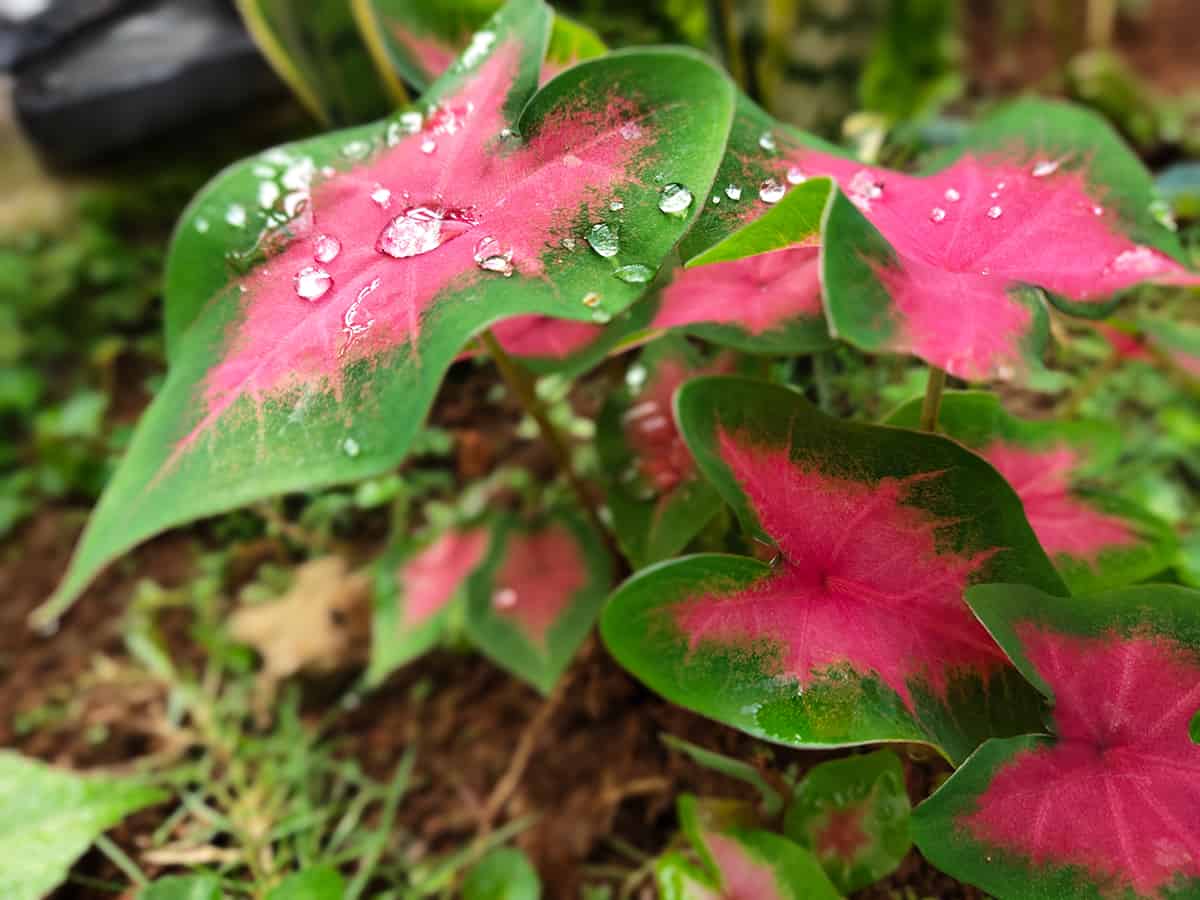
Caladiums flourish in soil that is both well-drained and rich in organic matter. Your initial step is to ensure the soil pH is slightly acidic, ideally between 6.0 and 6.5. You can achieve this by incorporating materials like pine bark mulch or compost into the soil, which will enhance aeration and drainage.
For optimal growth, the soil’s temperature when planting caladium tubers should be at least 70°F. Planting in cooler soil can lead to slow growth or tuber rot. To prevent such issues, wait for warmer weather before planting.
You’ll find that caladiums respond best to soil that retains moisture without becoming waterlogged. Good soil practices include testing for proper pH and adjusting the soil composition with organic matter prior to planting.
Water

Caladiums need regular watering. You should keep the soil moist to the touch, but ensure it’s not waterlogged. Overwatering can cause tuber rot.
Water quality matters. Use room-temperature water for your caladiums. It’s gentle on the plant’s roots. Avoid using water that is too cold or too hot, as it can shock the plants.
In hot weather, caladiums might need more water. Touch the soil daily. If the top inch feels dry, it’s time to water. During cooler weather, reduce the frequency to prevent soggy conditions.
Be mindful of rain. Outdoor caladiums can get ample water from rainfall. Check the soil after rains to gauge if more watering is necessary. Protect the plants if excessive rain threatens to saturate the ground.
Temperature and Humidity
Caladiums thrive in warm, humid conditions. You should maintain a soil temperature below 85°F, as higher temperatures can stifle growth. These plants prefer a climate similar to that of their native tropical habitats, where the humidity is high.
When growing caladiums indoors, it’s important to create a conducive environment. Consider using a humidifier or placing a water tray near the plants to boost humidity levels. Caladiums will enter a dormancy phase if indoor conditions don’t mimic their natural growing season, which typically includes a high level of humidity.
Remember, caladiums are sensitive to cold. Protect them from temperatures below 60°F. During colder months, the plants will die back and go dormant. Store tubers in a dry, cool place until replanting. Keep caladiums away from drafts, as sudden temperature changes can harm them.
Fertilizer
You must ensure they receive ample nutrients to produce vibrant leaves. Begin by applying a balanced fertilizer early in the growing season. A formula like 5-10-10 fertilizer supports healthy growth.
For container-grown caladiums, more frequent feeding is required. Use a liquid fertilizer every two weeks. This encourages strong foliage. Choose products designed for houseplants, like Miracle-Gro® Liquid All Purpose.
Substitute a time-release fertilizer if it’s more convenient for you. These feed your caladiums slowly over several months. An option here is a 6-month time-release fertilizer, such as Osmocote.
When you apply fertilizer, spread it evenly and avoid direct contact with the leaves. This practice helps prevent leaf burn. Remember to water your plants thoroughly afterward. It helps the nutrients reach the roots and reduces the risk of fertilizer injury.
Propagation
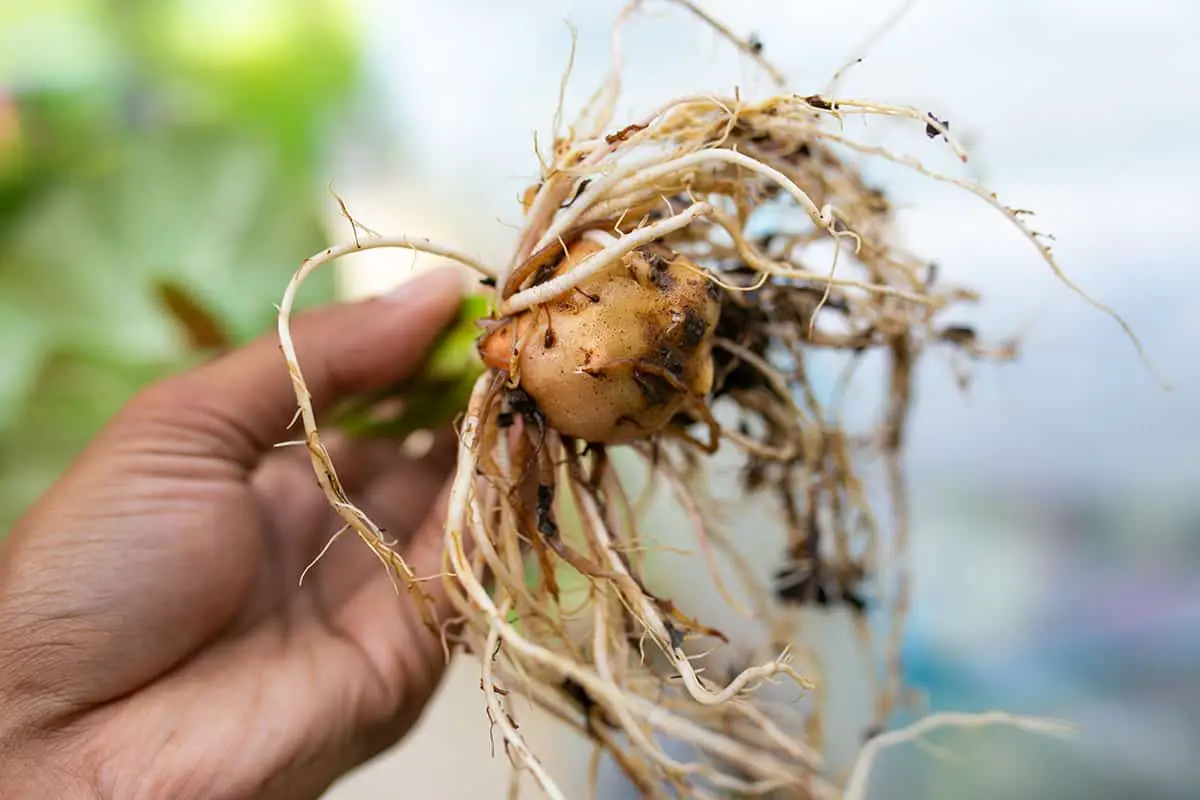
Propagation of caladium involves dividing the tubers. This process occurs in spring. Start by selecting a healthy tuber. Ensure it has at least one eye, which is a growth point.
After cutting the tuber into sections, each piece needs time to dry. A few days of drying helps the cuts callous over. This step is crucial to prevent rot when you plant them.
Caladiums thrive in well-drained, warm soil. Before you plant, check that your soil’s temperature is at least 70°F. If you’re uncertain about timing, consider the planting period of okra in your area, as it’s similar for caladiums.
Remember, all parts of the caladium plant are toxic when ingested in large quantities. Handling the plants can also cause irritation for some. Always wear gloves during propagation to protect your skin.
Pruning
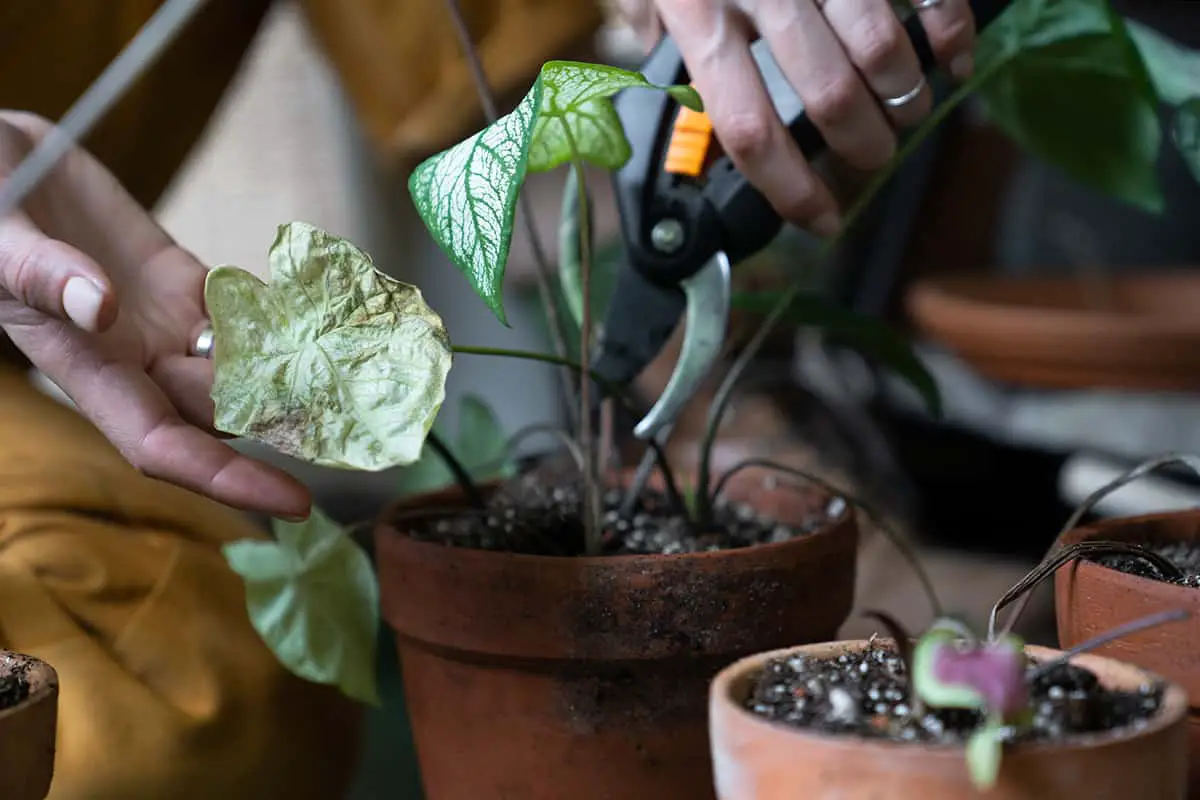
When you grow Caladium, pruning is simple. Your plant’s leaves are the key focus. They may fade or wilt over time, so you need to remove these leaves. Ensure you cut close to the stem base. This action keeps your Caladium healthy.
After flowering, the plant may produce inedible berries. Removing these berries saves energy. Your plant then directs energy to leaf production. Use sharp scissors for cutting to avoid damaging the plant.
Prune your Caladium regularly. Check for yellowing or damaged leaves. Remove these to maintain appearance and health. Remember, clean cuts are important. Sterilize your tools before pruning to prevent disease spread.
Potting and Repotting
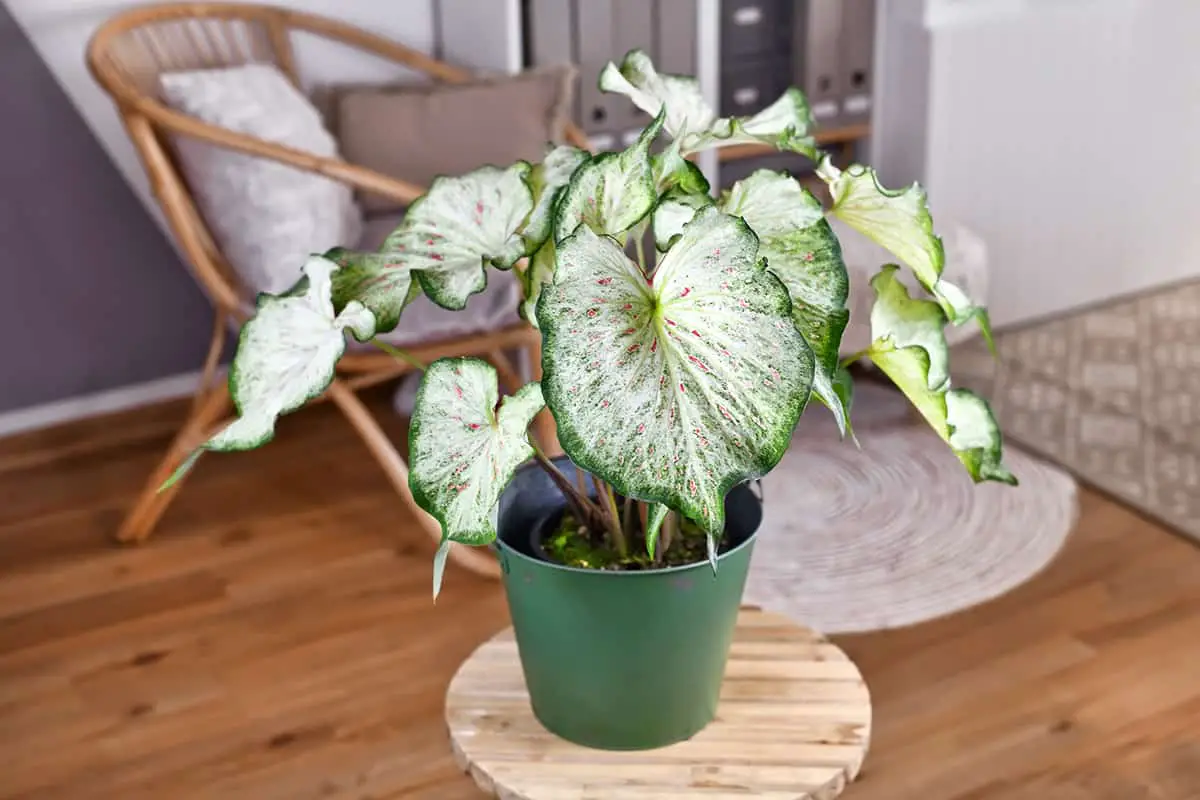
When growing Caladium, potting plays a key role. Choose a container with adequate drainage holes. This prevents water from sitting at the bottom and causing the tubers to rot. Select a pot that gives the tuber about 2 inches of space all around.
For repotting, do this every spring or when the plant outgrows its current pot. Caladium likes to be snug in its pot, so don’t choose one that’s too large. Your tuber will appreciate a fresh, well-draining soil mix. A mix with peat moss and perlite aids in moisture retention and aeration.
It’s essential to handle tubers gently during repotting. They hold the potential for the next season’s growth. After repotting, water your Caladium thoroughly to settle the soil around the tuber. Avoid watering again until the top inch of soil feels dry. This ensures a strong start for your Caladium’s growth cycle.
Common Problems & Troubleshooting
Caladiums may face pest issues. Aphids and spider mites find these plants attractive. If you notice your plant’s leaves turning yellow or spotting, inspect for these pests. Combat them using insecticidal soap or neem oil.
Fungal diseases also threaten caladiums. Overwatering can lead to root rot, so make sure your caladiums have well-draining soil. If leaves show a mushy base or black spots, reduce watering and improve air circulation.
Caladium leaves can burn in direct sunlight. If leaf edges turn brown, move your plant to a shaded area. Caladiums thrive in indirect light, so your plant will regain its vibrant color with time.
Nutrient deficiency is less common but can occur. Yellowing leaves might indicate a lack of essential nutrients. Apply a balanced, slow-release fertilizer to nourish your caladiums. This will encourage robust and colorful foliage.
Caladium Varieties
Caladium plants come in several attractive varieties. Each brings a unique color and pattern that can brighten up your garden.
Caladium ‘Carolyn Whorton’
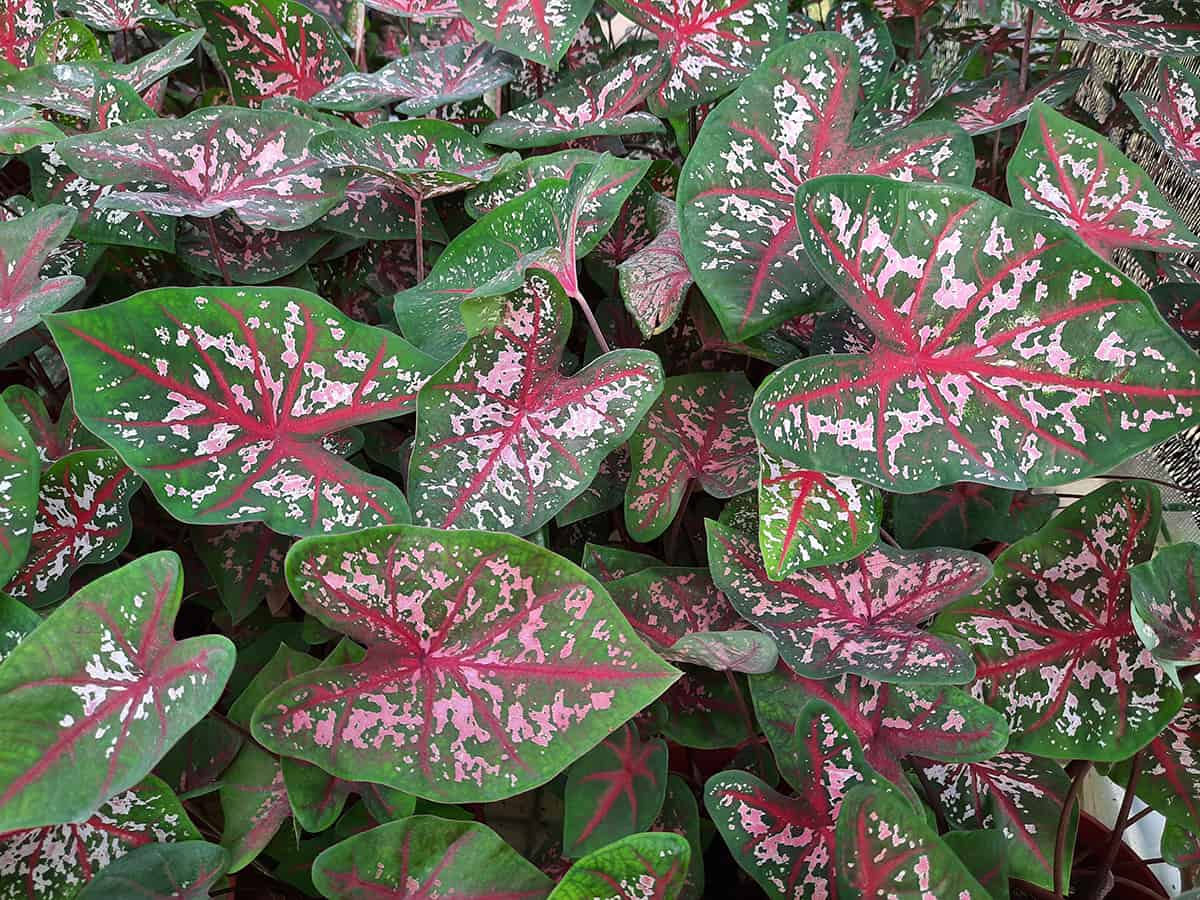
You’ll spot ‘Carolyn Whorton’ by its large, pink leaves with green edges. It thrives in both sun and shade, making it a versatile choice for your garden.
Caladium ‘Florida Sweetheart’

The ‘Florida Sweetheart’ variety stands out with its heart-shaped, deep pink leaves and green borders. It’s a compact plant, ideal for smaller spaces or pots.
Caladium ‘White Queen’
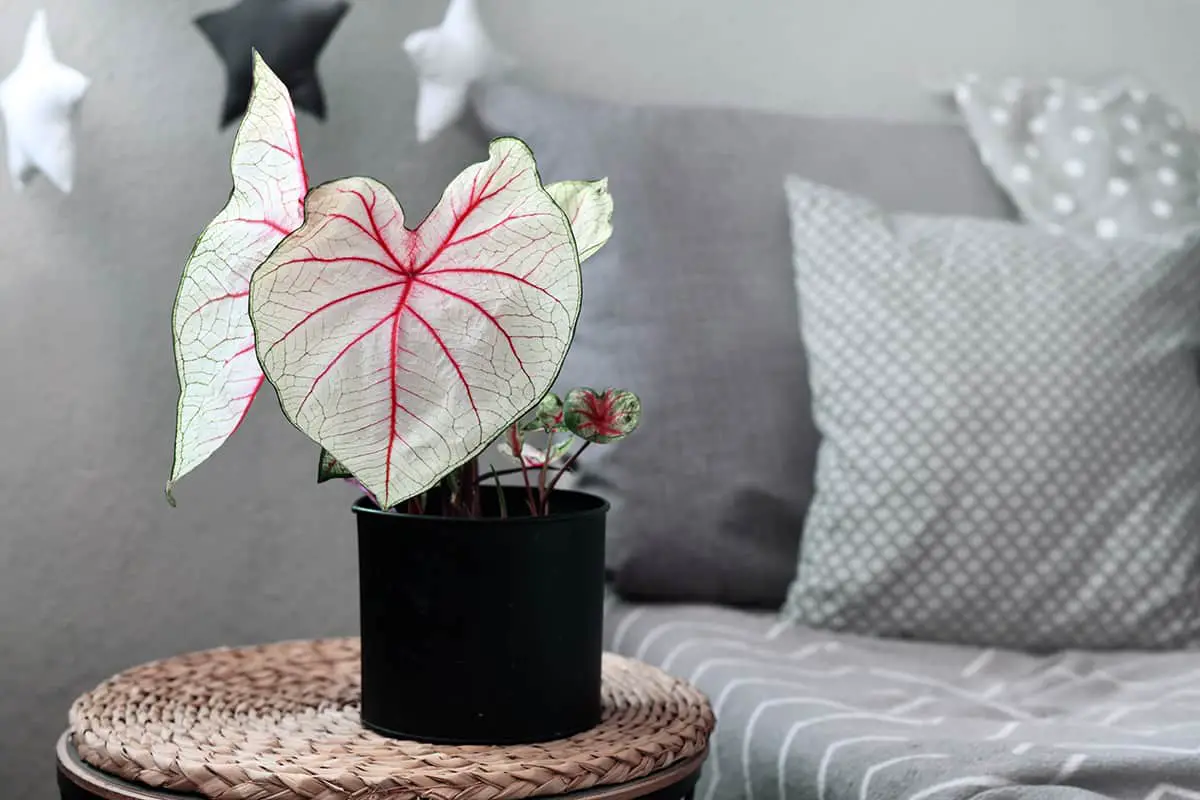
‘White Queen’ gives you striking white leaves that have pronounced red veins and a subtle green edge. This variety prefers a bit of shade and adds a bright splash to any garden corner.
Caladium ‘Red Flash’
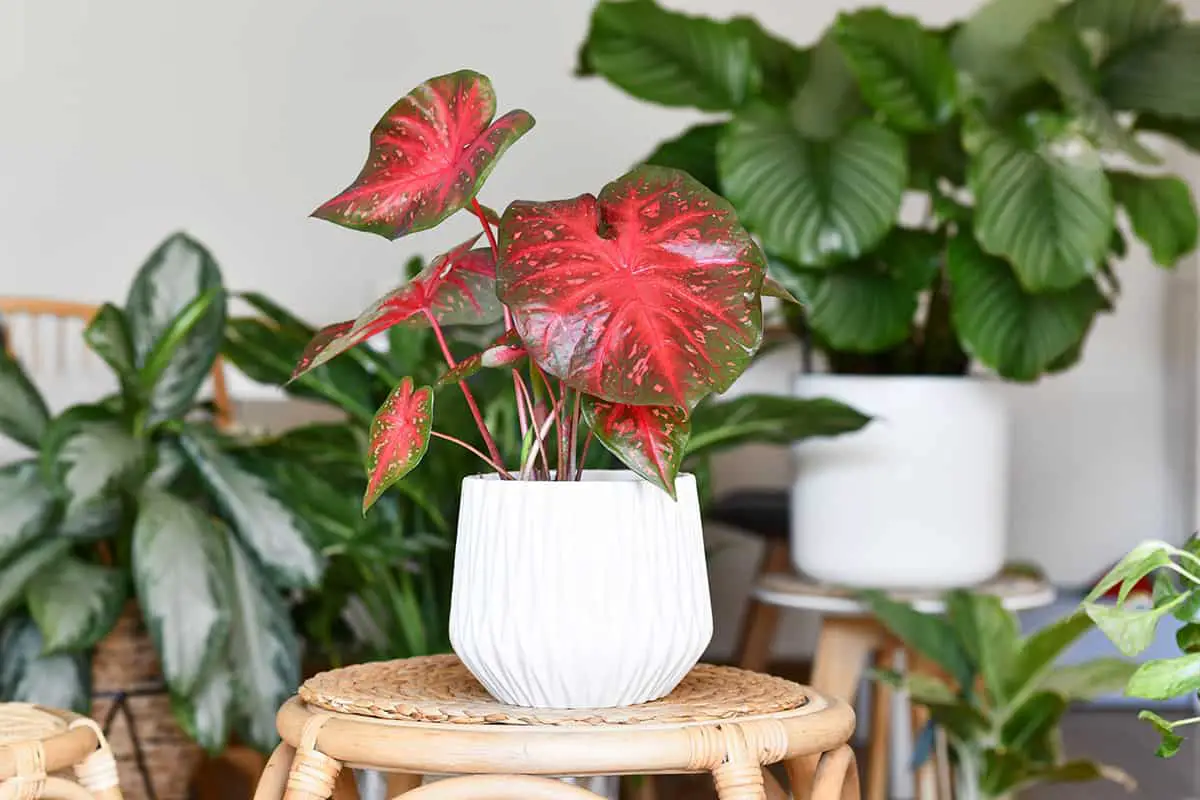
With ‘Red Flash’, you get dark green leaves speckled with red and pink spots, and a red central vein. This plant gets large, providing a lush, full look to your space.
Caladium ‘Moonlight’
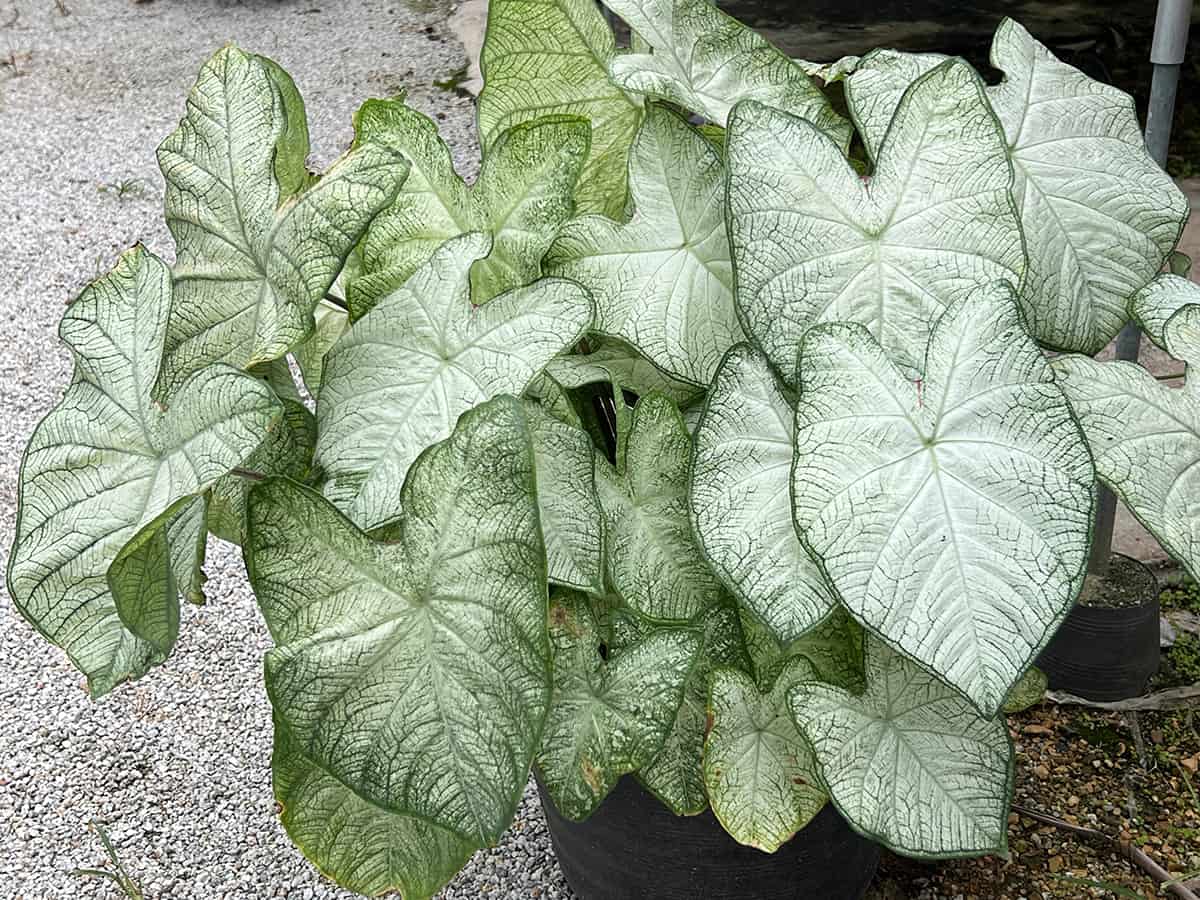
‘Moonlight’ caladiums offer a different look with their luminous, almost translucent white leaves. They can provide a beautiful contrast when planted among darker foliage.
